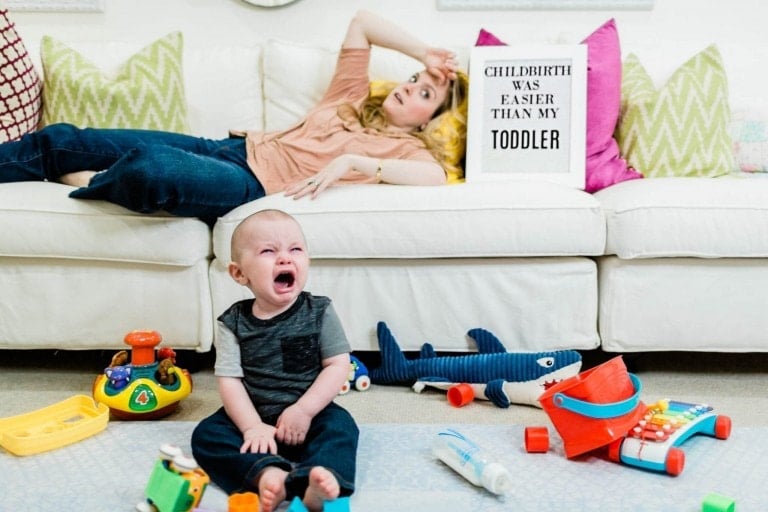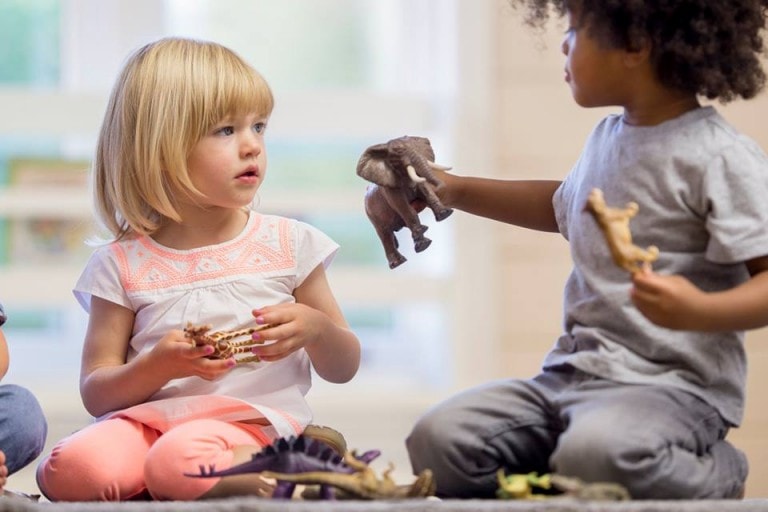Hooray! Your baby started speaking! By around 18 months, your child begins to amass quite a vocabulary. By 24 months, your little one is ready to start combining words. With all this language happening, you might wonder, “Okay, but when will I start to understand my toddler?” Probably not for a while, but that’s normal!1 The development of sounds is tricky. So, let’s go through how sounds develop, what is normal, and what to look out for regarding articulation development.
How Sounds Develop
Your child will begin to develop sounds in a very predictable order. Open vowels, such as “a” and “u,” come first, followed by bilabial (lip) sounds, which are easy for babies to see. This is when you’ll start to hear your baby move from those cute little coos to babbling and onto their first words. Once they become more comfortable making sounds, babies will begin experimenting more with sounds that are more difficult to see, like sounds that move from the front of the mouth (t, d, n) to the back of the mouth (k, g).
By the time your child is 24 months old, they have had time to practice making sounds in words. They have firmly established p, b, m, t, d, n, w, and h, along with a range of short vowel sounds (ah, uh, eh) that they can use in different combinations. Interestingly, this pertains to all languages across the world! By 3 years of age, a child has the majority of sounds found in their home language.
Normal Articulation
As a general rule of thumb, you should be able to understand your toddler 25% of the time by 1 year of age. By age two, you should understand them 50% of the time. And by age three, 75% of the time. You should be able to understand close to 100% of what your toddler says by 4 years of age.
In addition to learning more sounds, babies also go through a period of learning the different speech patterns in their language, called phonological processes. For example, in English, children need to learn that we end many words with consonants. This is why you may hear many babies refer to a dog as a “do.” Children will also use different patterns to simplify what they say and make it easier for their mouths to produce words. So a longer word like “banana” may become “nana” while “flower” with an initial blend might sound more like “fowa.”
Concerns to Look Out For
Articulation concerns in the toddler and preschool population are probably the most common phone calls I get from parents. However, there are certain things a parent can look for when deciding if it is time to consult a speech-language pathologist. Keep an eye out for things such as:
- Limited sounds for babbling
- Frequent ear infections
- Excessive drooling (not associated with teething)
- Thumb sucking or extended pacifier usage (beyond 1 year)
- Frustration when not understood by parents, teachers, or peers
- Avoiding speaking in social situations
- A child who is understood less than what is indicated above
The bottom line is that understanding your toddler will probably take a while, but that is perfectly normal. By knowing how speech sounds develop, parents can play an integral role in supporting their children and knowing when to seek outside support.






























